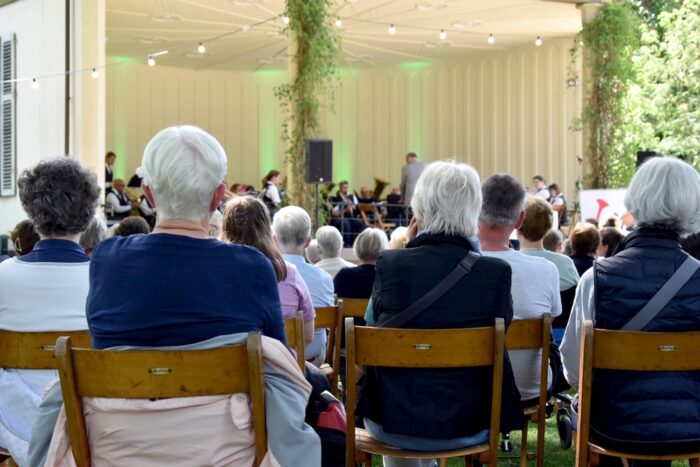The Progressive Post
Roma survey shows disappointing results

For more than a decade, the EU has been the driving force behind initiatives to reduce the disadvantages and discrimination faced by Roma minorities. Data from the Fundamental Rights Agency show that this racialisation of public policy has had little effect on reducing inequality.
Over the last decade, the EU has become the driving force behind the politicisation of Roma identity and stands at the apex of a Europe-wide governance structure directed towards a specific ethnic minority. In December last year, the European Union’s Agency for Fundamental Rights (FRA) published its latest European Roma survey measuring the progress of Roma policy. Racialising public policy without reducing inequality creates a risk for the EU that progressive politics must do more to mitigate.
Due to the ambiguity of Roma identity, FRA Roma data is vital for measuring Roma policy. ‘Roma’ is a relatively new political identity encompassing numerous other identities, and the definition of Roma lists several different types of communities. Census data is limited in coverage but consistently finds far smaller Roma populations than the estimates preferred in the European Roma policy discourse. The absence of a shared culture or other characteristic traits leads to inconsistencies in whom the identity is applied. Unable to rely on others, the EC commissions FRA to provide quantitative, ethnically disaggregated data, which is considered reliably representative of the Roma in order to monitor policy impact.
The 2021 Roma survey was carried out in 2021 in ten EU member states (plus North Macedonia and Serbia) considered to represent 87 per cent of the EU Roma minority. The results were derived from 8,000 respondents covering up to 28,000 people and focused on the EU Strategy’s targets. This was the fifth FRA Roma survey and was compared with results from 2016. There were greater or lesser differences between the countries and the figures below are aggregated to present the EU overview. The results were underwhelming and contradictory, leading the foreword of the FRA director Michael O’Flaherty to express that “it saddens us that yet again, six years on since we last reported from these countries on our Roma survey findings, not much has changed”.
Significant improvement was seen for those Roma who had been experiencing a hate crime: their share fell from 30 to 17 per cent. At the same time, those who believed they had been discriminated against concerning employment almost doubled from 16 to 30 per cent and, regarding education, the figures rose from 7 to 11 per cent and, in health care from 8 to 14 per cent. The largest recorded positive change was in respect of Roma who have heard of at least one kind of equality body, which increased from 29 to 50 per cent. Nevertheless, the rate of reporting an act of discrimination actually fell from 16 to 5 per cent!
Regarding education, participation in preschool and youths completing secondary school barely changed (+/-2 per cent) and was, respectively, 49 and 57 per cent below the EU average. The rate of educational segregation increased from 44 to 52 per cent. The employment rate of Roma remained the same at 43 per cent, while the number of young Roma not in employment, education or training (NEETS) rose slightly to 53 per cent. Employing a new method to calculate life expectancy for the first time, the survey found that Roma men can expect to live 9.1 years less than the EU average, and it is even 11 years less for Roma women.
Regarding living conditions, the number of Roma living in deprived housing fell from 61 to 52 per cent, and those living in homes without running water from 30 to 22 per cent, while overcrowding increased from 78 to 82 per cent. There was a significant fall in those experiencing severe material deprivation (unable to afford certain items) from 62 down to 48 per cent (from 66 to 54 per cent for Roma children). Nevertheless, the survey recorded exactly the same rate – 80 per cent – of Roma being at risk of poverty (income below 60 per cent of the relevant national median) as five years previously.
This failure to reduce poverty and exclusion does not reflect temporary factors such as Covid-19 but is consistent with many examples of national and transnational Roma policy initiatives. The EC responded in its new 10-year strategy by dramatically increasing the number of targets and indicators from four to over 200, most of which will be assessed according to FRA Roma data. However, generating ever more Roma-specific information will not change the fact that the success of the strategy depends on the member states. Though innovative (it is the EU’s only ethnic policy), no impact assessment was undertaken as the “expected impacts strongly depend on the level of commitment to Roma equality and inclusion that member states agree to”.
The fundamental problem lies in the weakness of Roma as an interest group in domestic politics, which determines national policy priorities. In many EU countries, Roma constitute a tiny part of the overall population and have distinct needs, for example, Gens du Voyage. Large Roma minorities present complex challenges to labour markets, the quality and accessibility of public services, housing quality and segregation and even national identity. Roma migrants do not have national citizenship. Given the ambiguity and low status of Roma identity, social and cultural diversity, high levels of poverty and exclusion, and limited political traditions or capacity, it is not surprising that those targeted by Roma policy have little influence over its content and effectiveness.
In the new EU Roma Strategy particular emphasis has been placed on tackling prejudice and discrimination, conceptualised as antigypsyism. Good intentions notwithstanding, leading an ethnically specific racialised policy discourse and governance process that does not reduce the inequality and exclusion of the targeted group is an uncomfortable place to be. While progressive parties have often been ambivalent about Roma identity politics, racialised social division is usually disadvantageous for the left. Only more effective social policy interventions based on civic equality can mitigate the risk of EU Roma policy actively contributing to social fragmentation along racial lines. In combining a discourse of racialised difference with limited impact on inequality, the EU’s Roma Strategy demonstrates that the battle for inclusion has to be won in each society in recognition of the complex factors that determine inequality and exclusion.




